On our first day in Namibia, we stopped for lunch at Fish River Canyon, the world’s second largest canyon after the Grand Canyon. Unfortunately, all the hiking trails are closed in summer because the temperature in the canyon was above 50 degrees Celsius. The geology and landscape, which is dry with no vegetation and has some of the most spectacular desert ecosystems in the world.
Enlarge
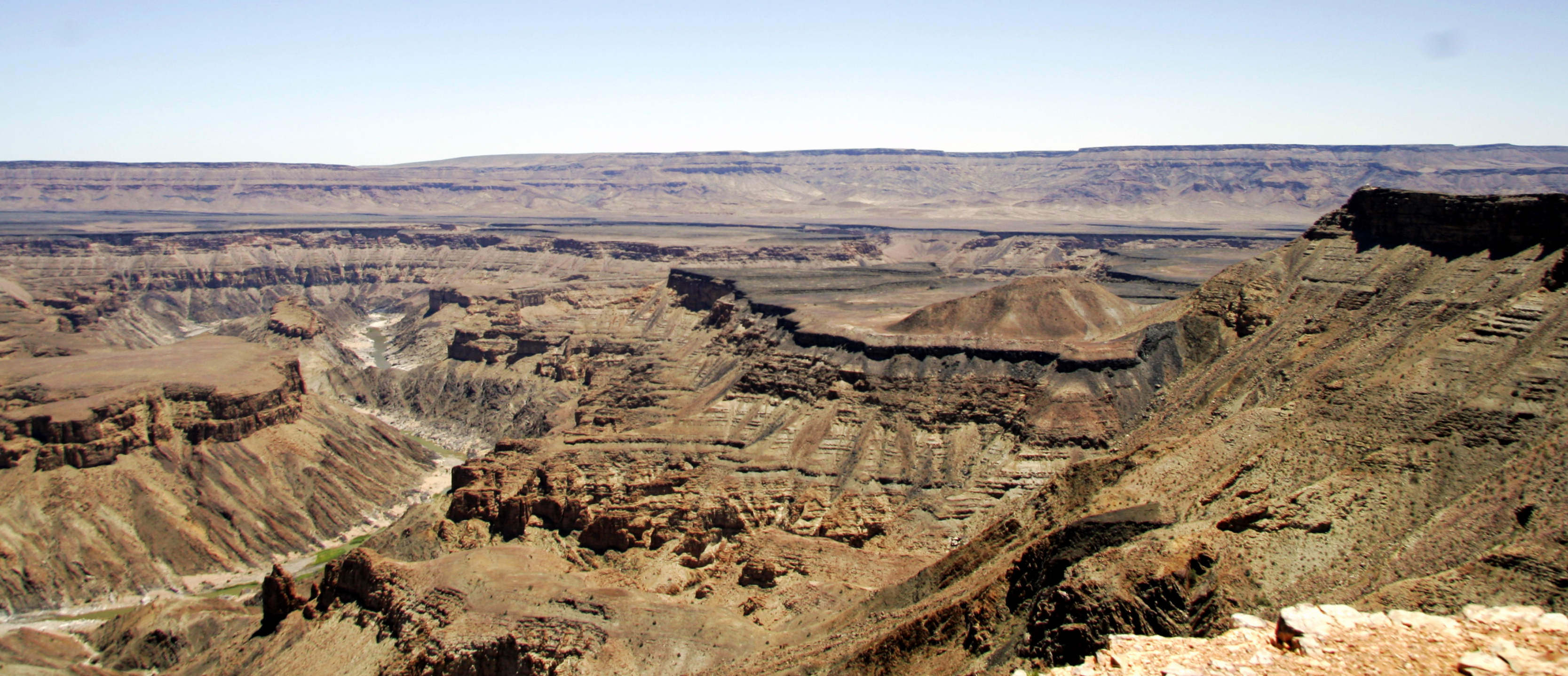
Adventurouspirits
Quiver trees grow in harsh semi arid regions, usually singularly or in small clumps.
Enlarge
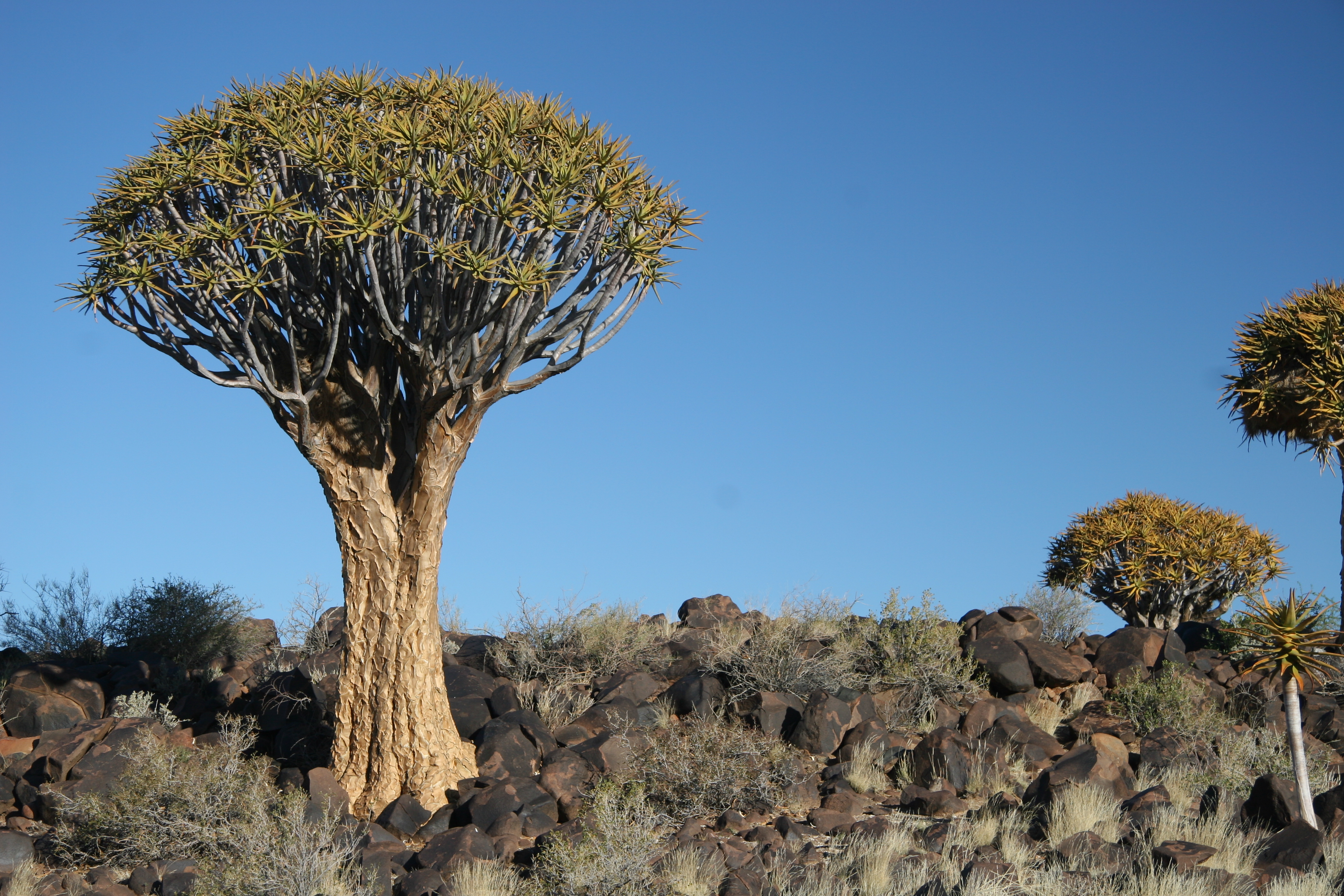
Adventuoruspirits
That evening we climbed up a ridge to watch the sun setting over the Quiver trees. Settling under a large tree our attention was drawn to the sounds of gregarious sociable weaverbirds in the tree. These amazing little birds build huge communal nests. Despite the size of the weavers, the nests can weigh up to 50kg and the branches unable to support the weight will break off. We watched an African sunset entertained by activities of the weavers.
Enlarge
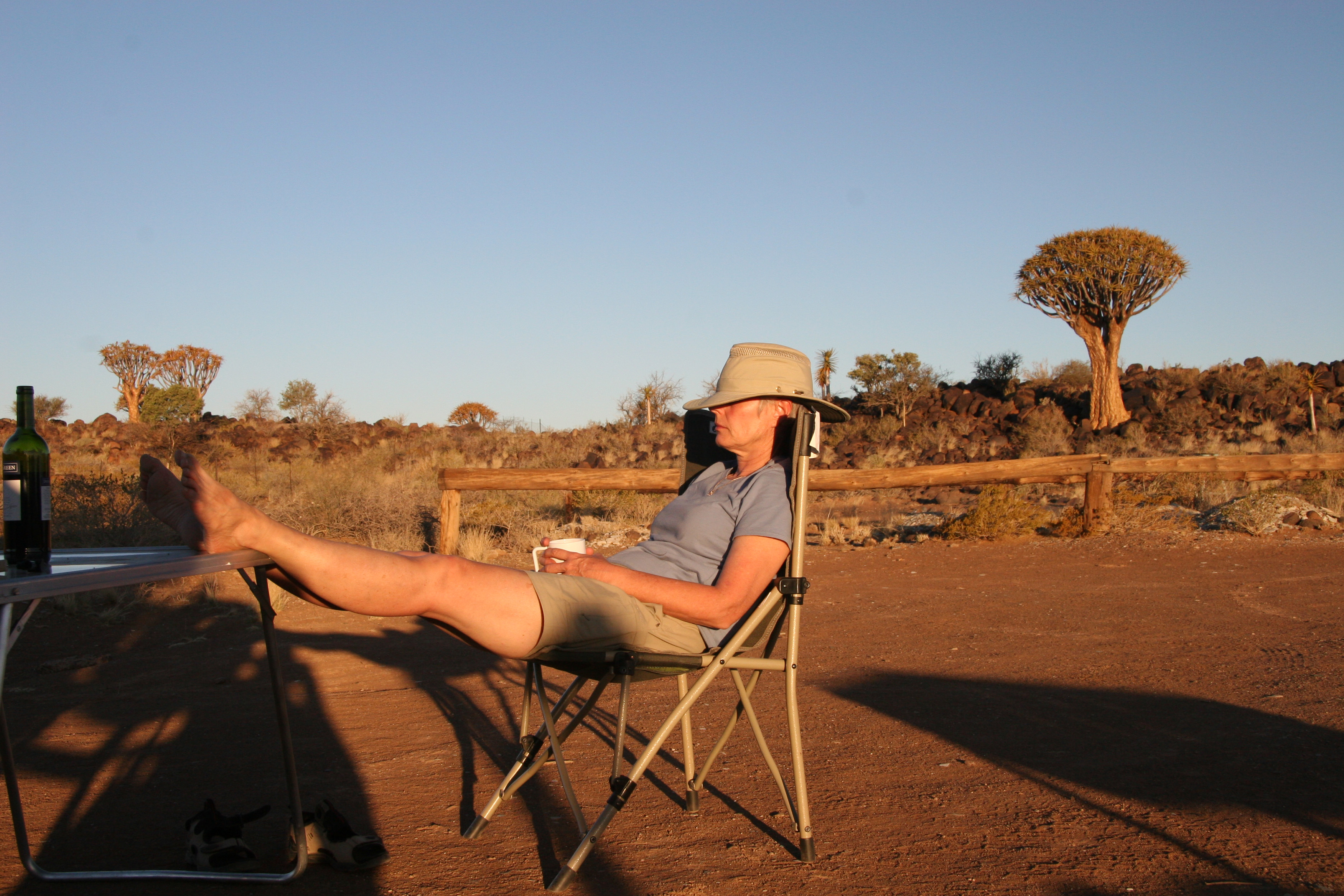
Adventurouspirits
Our curiosity in Quiver trees was however, diverted, to Kumba the pet warthog. Rescued, as a baby orphan by a couple that took him home, Kumba was bottle fed and raised as a member of the family. Warthogs can weight up to 100kg and certainly, Kumba did not for lack food and was the biggest warthog we had seen. Warthog’s tusks are actually teeth and are used as defensive weapons. Warthogs are the leopard’s favourite food. However, warthogs give leopards a good fight and can to rip a leopard open with their tusks, even killing the leopard.
Enlarge

ADVENTUROUPIRITS
The campsite owners also bred leopards which they sold to the surrounding private game parks. As a result Kumba and the cheetahs were completely unconcerned about each others presence and loved all the constant attention from the visitors.
Enlarge

Adventurouspirits
Their pet dog however was not impressed with all the attention that Kumba and Cheetahs were getting and started to jump on the trampoline to try to get visitors to pay attention to him. When it became clear that this did not work he simply gave up in disgust.
Enlarge

Adventurouspirits
Our trip to Soussosvlei took us past the small hamlet of Maltahohe.
Enlarge

Adventurouspirits
Enlarge

Adventurouspirits
A few miles further on Tom’s skills and equipment are put to the test as we blow out three tires and only carry two spares. As we are leaving a local who stopped and offered help states “Oh well, this is Africa and shit happens”.
Enlarge

Adventurouspirits
Since it is already late in the day darkness descends just as we are able to move on to the safety of a nearby camp.
Enlarge
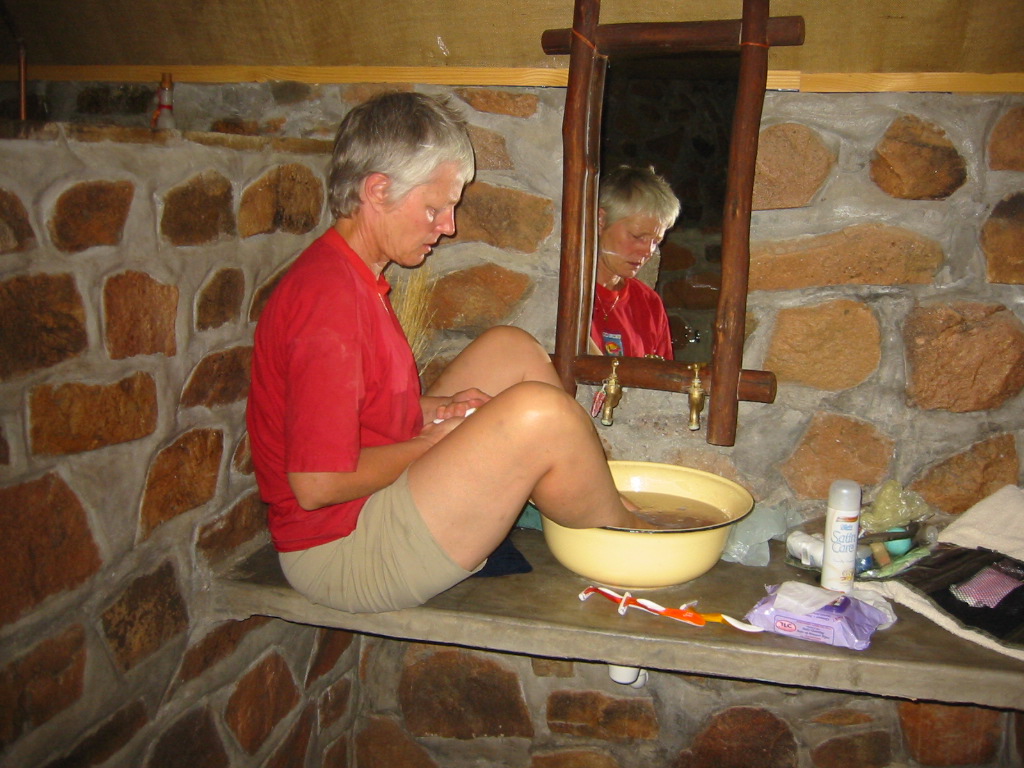
Adventurouspirits
There is nothing on earth to rival the splendour of an African sunset.
Enlarge

Adventurouspirits
The Namib Desert is the oldest desert with one of the driest ecosystems in the world. The breathtaking landscape of soaring dunes of the Namib Desert captivated us with its amazing spectacle of intricate shades of browns, reds, and yellows. Colours were constantly changing in the sunlight, shapes constantly altering in the winds. We spent the day amongst the dunes, enjoying the peace, hiking up the dunes, and waiting for sunset.
Enlarge

Adventurouspirits
We access Sandwich Harbour by driving down the beach at low tide. A dangerous activity so we use the services of a knowledgeable guide. It is a spectacular location where the towering dunes of the Namib Desert touch the shores of the cold Atlantic. Sandwich Harbour is the only source of fresh water on the western edge of the very very dry Namib Desert.
Enlarge

Adventurouspirits
The entrance to the Skeleton National Park makes it very clear that you should not explore this area unless you are very well prepared.
Enlarge

Adventurouspirits
Our trusty Land Cruiser provides Janet with a great view point since there are no hills to climb to get a vista.
Enlarge

Adventurouspirits
A salt road stretches north as far as the eye can see.
Enlarge

Adventurouspirits
This is named the “skeleton Coast” because the sailors who survived the numerous shipwrecks all died due to the extremely unforgiving landscape they encountered on reaching the shore.
Enlarge

Adventurouspirits
Cape Seal Reserve is said to the smelliest place in the world. With tons of guano and tens of thousands of seals basking on the rocks, playing in the pounding waves, bull seals protecting their harem and their pups it was in deed a smelly place. Why the seals have chosen this location for their colony is not yet understood.
Enlarge
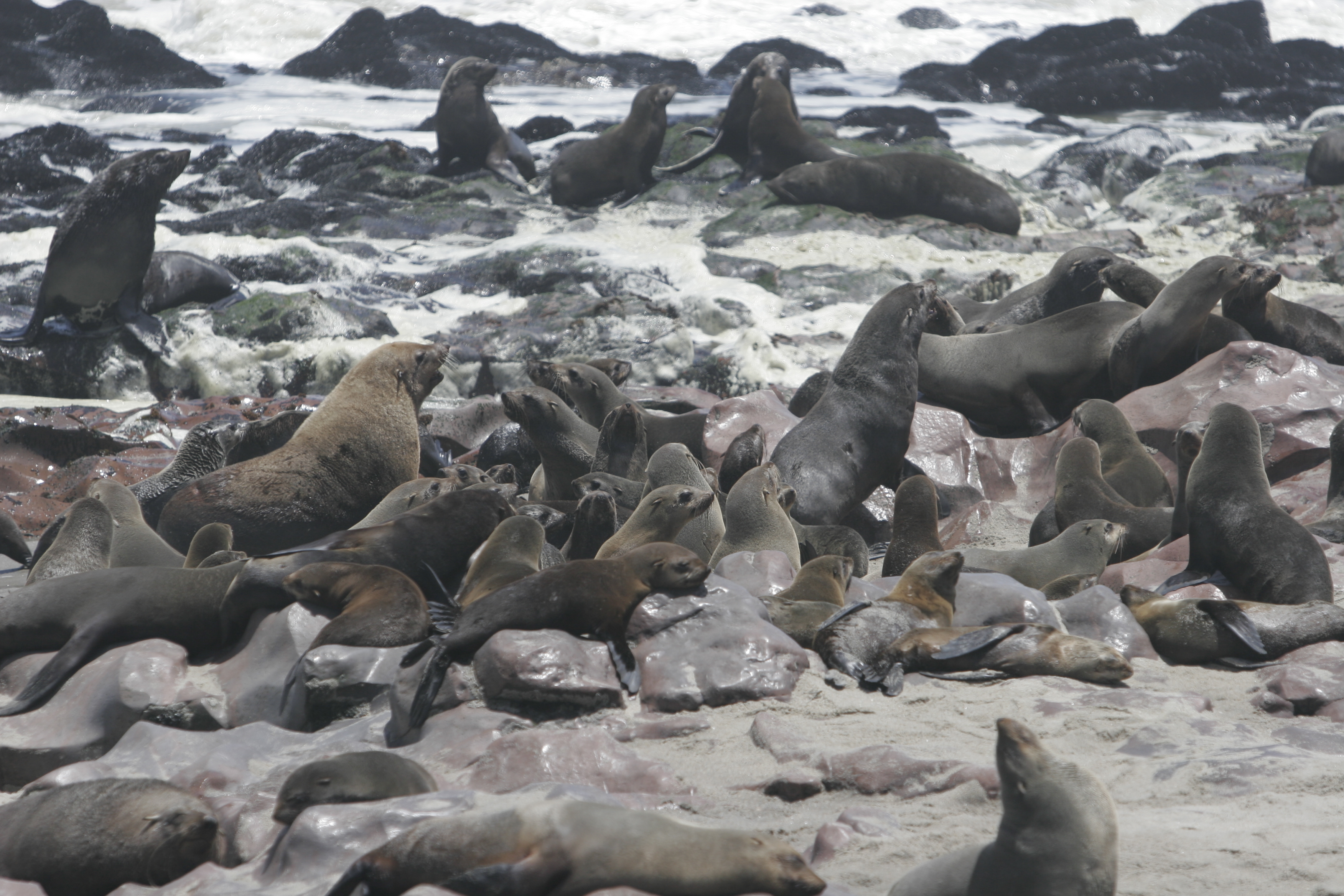
Adventurouspirits
Walking towards the rocks, I noticed seal acting strangely behind some rocks. Moving closer I saw she had just given birth, the tiny pup squealing still attached to the placenta. The mother seal turned slowly around and towards her pup. She gentle touched the squealing pup and the beginning of the strong bonding began. Seal pups and their mothers are known for the strong bond they develop. 25% of all pups do not make it. The brown hyena and jackal predators kill the old, sick, and young seals. Due to the crowded beach and rocks, many pups are simply crushed to death. We watched this spectacle scene and behind us lurked the jackals, waiting and watching.
Enlarge
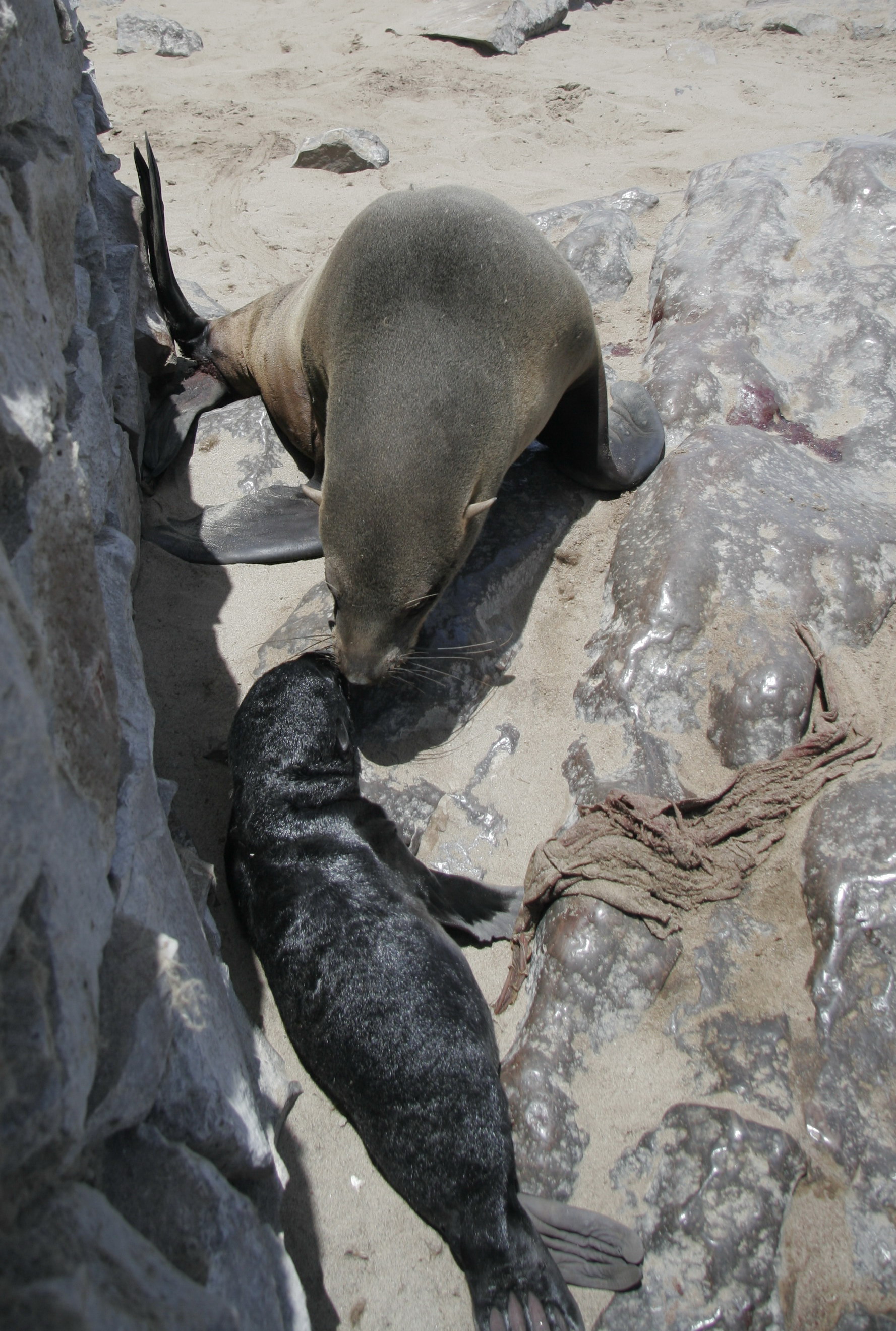
Adventurouspirits
We make camp at patch of green grass. A welcome relief on the eyes from the harsh brown landscape we’ve been driving through for many days.
Enlarge
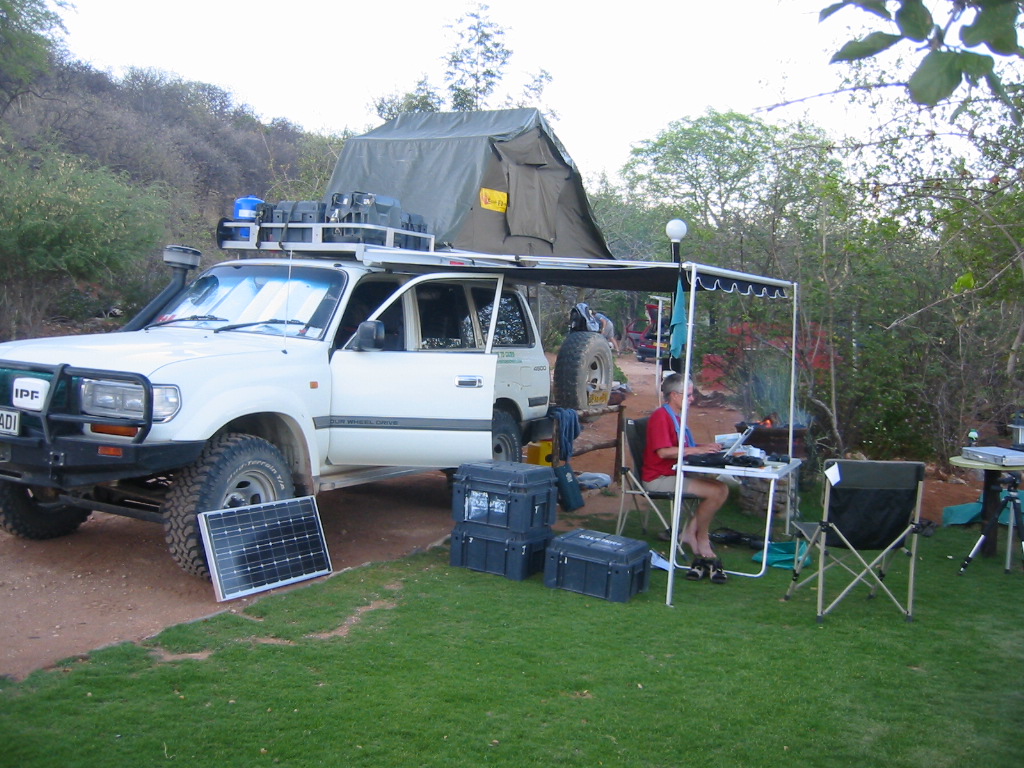
Adventurouspirits
Twyfelfontein, located inland from the Skeleton Coast is Africa’s largest collection of rock engravings. Among the jagged outcrops and boulders are over 2,500 petroglyphs some dating back 6000 years. The rock engravings were painstakingly chiseled out by nomadic Bushman depicting animals from all over Namibia; a clear indication of their nomadic lifestyle.
Enlarge
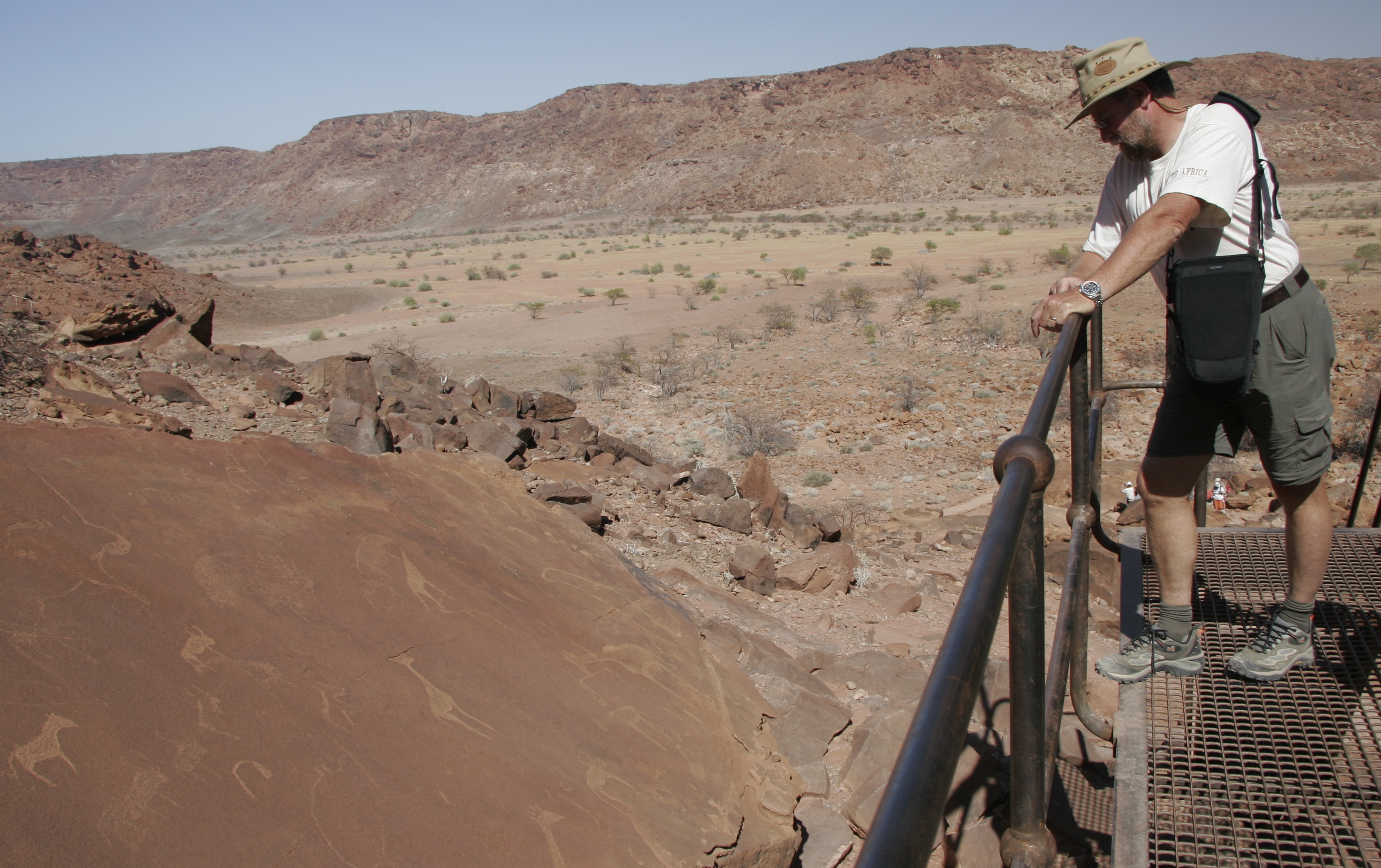
Anturouspirits
Our destination in Norther Namibia is the famed Etosha National park.
Enlarge
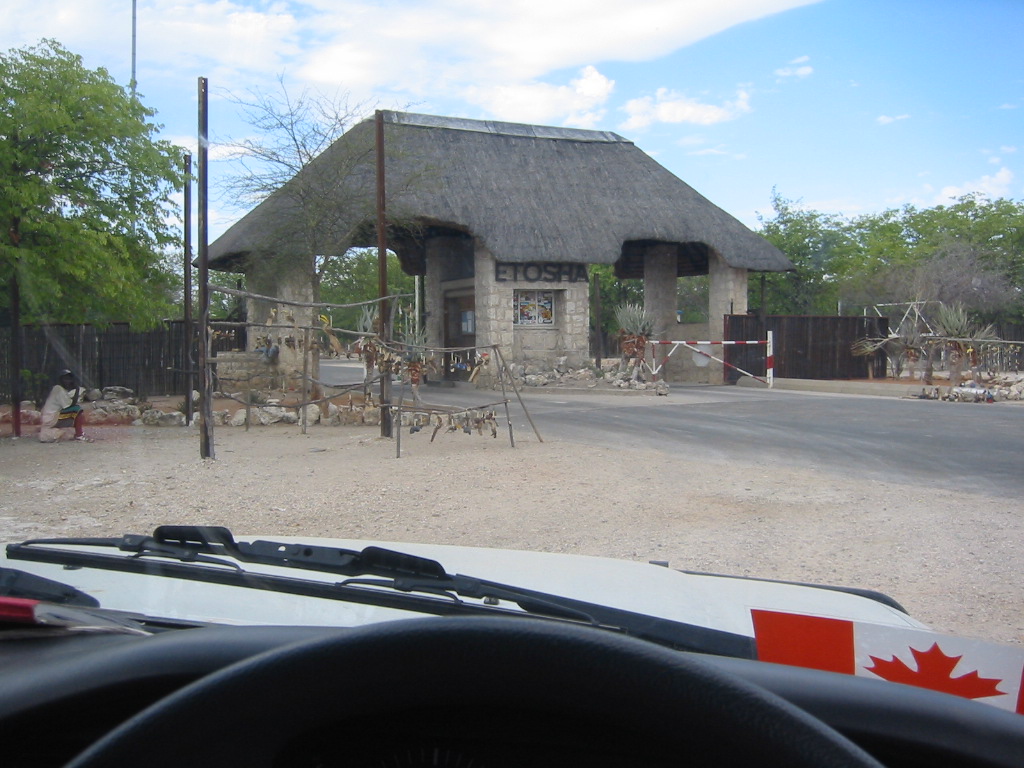
ADVENTUROUSPIRITS
Etosha is regarded as one of world greatest conservation parks. Covering as an area of 22,300km 2, it is home to several rare and endangered animals. Etosha means “place of emptiness” due to the vast dry saltpan covering over 5000 square kilometers. The pan seldom has any water (if any), as it is not fed by any reliable rivers but rather by the rare rain. When it does rain, the incredible high rate of evaporation leaves the pan dry once more. In the heat of the day, the dried out pans glisten like a sea of whiteness and mirages trick one into thinking there is abundant water in the distance.
Enlarge

ADVENTUROUSPIRITS
Yet Etosha begged to be explored. Countless wildlife congregates around scare waterholes and we watched with keen interest the social behaviour and interactions of the animals that come to quench their thirst.
The zebras are the choice of food for the lions in this area. Yet we watched a pride of lions amble past a herd of zebras that were following every step of the lions yet did not attempt to leave. They must have known the lions were not hungry and all the lions wanted to do was laze about. Lions are lazy and only kill when hungry, which is only on about every 3rd or 4th day. I cannot explain how the zebras knew the lions were no real threat. To sit and watch this incredible proliferation of life was an amazing experience.
Enlarge
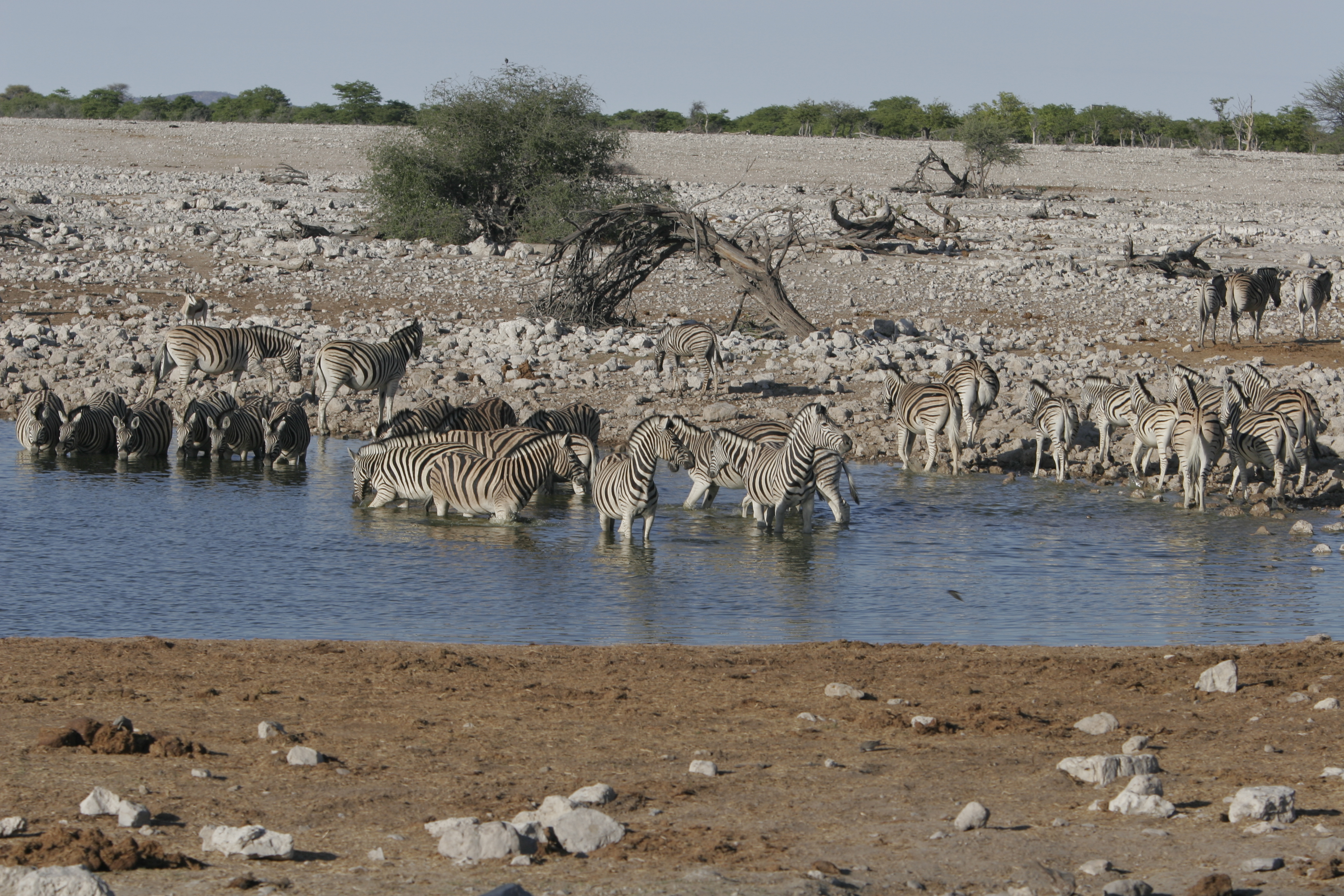
ADVENTUROUSPIRITS
Etosha National park is a veritable garden of Eden. A must place to visit.
Enlarge

Adventurouspirits
Nothing goes to waste in the cycle of life.
Enlarge

Adventurouspirits
Majestic Kudu.
Enlarge

Adventurouspirits
Everyone moves aside at the waterhole when the big boss comes to drink.
Enlarge

Adventurouspirits
Nature’s most perfectly designed creature, the Gemsbok. Not even Martha Stewart could improve it.
Enlarge

Adventurouspirits
I stride confidently over to assist some other campers with their broken faucet. They are extremely grateful. What they do not know is that Janet and I broke the tap by accidentally driving over it. Ha Ha!
Enlarge

Adventurouspirits
The heat is intense at midday, so an Ostrich mother provides shade and protection for her young family.
Enlarge

Adventurouspirits
Early evening light turns waterholes into magical spaces and experiences.
Enlarge

Adventurouspirits
Enlarge
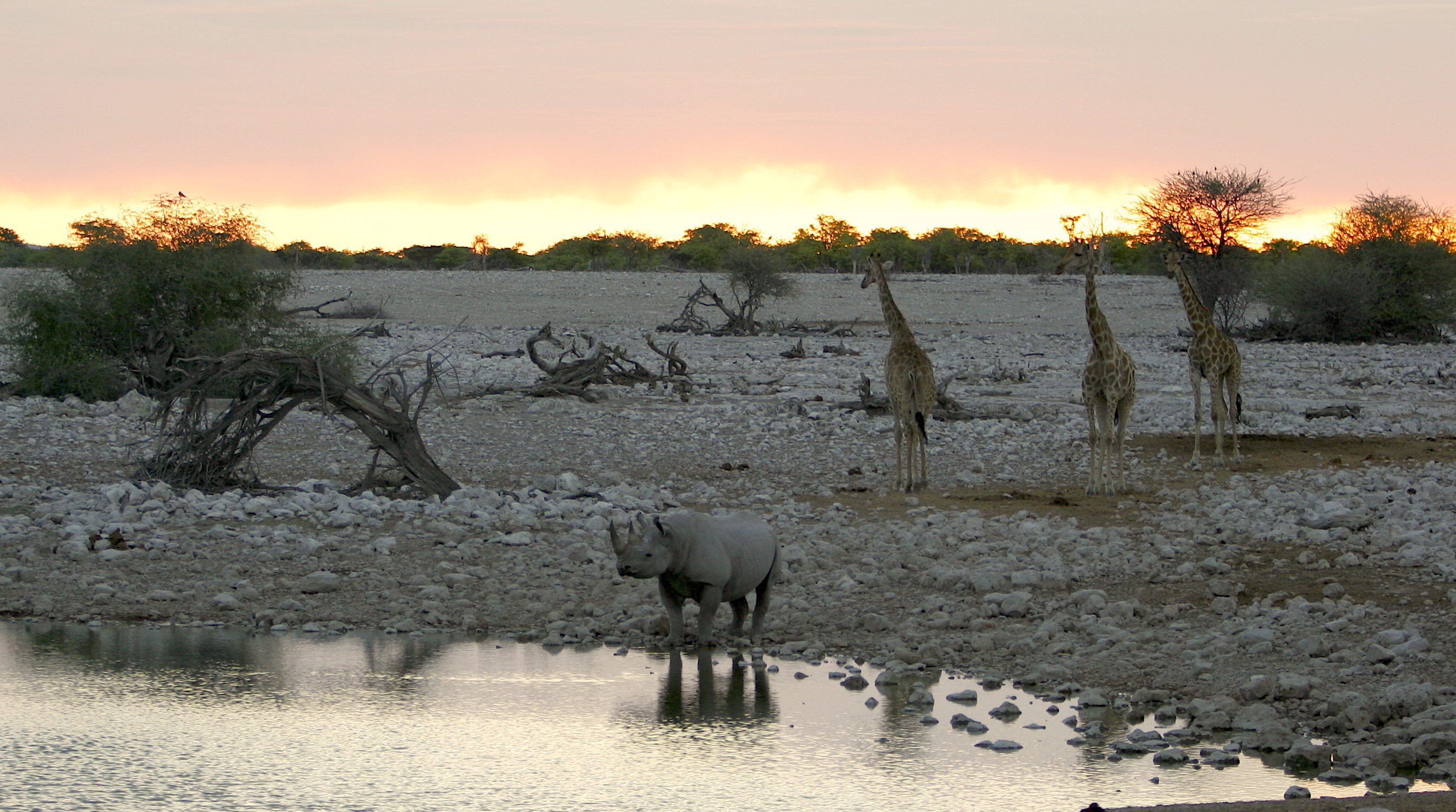
Adventurouspirits
Enlarge
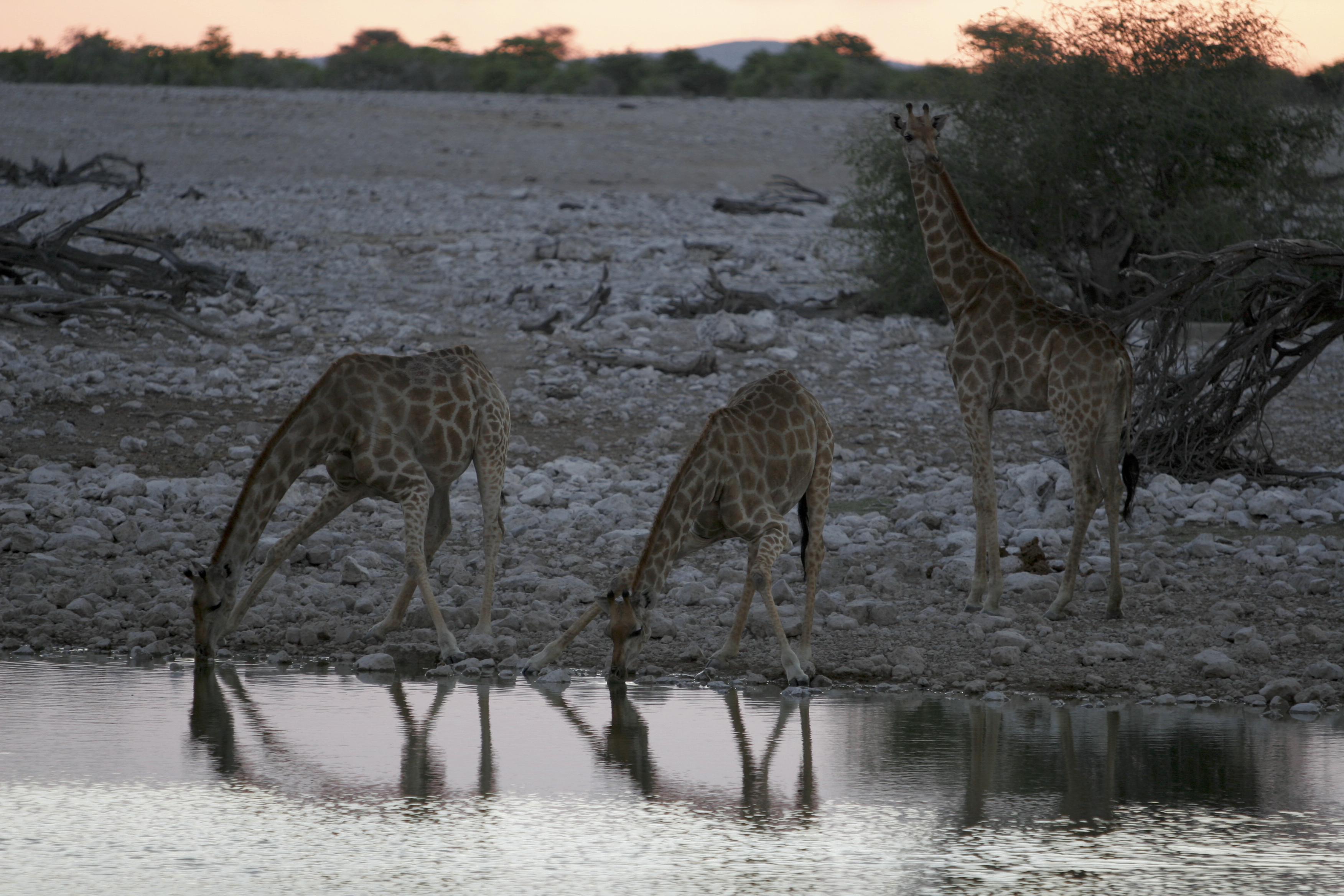
Adventurouspirits
Enlarge
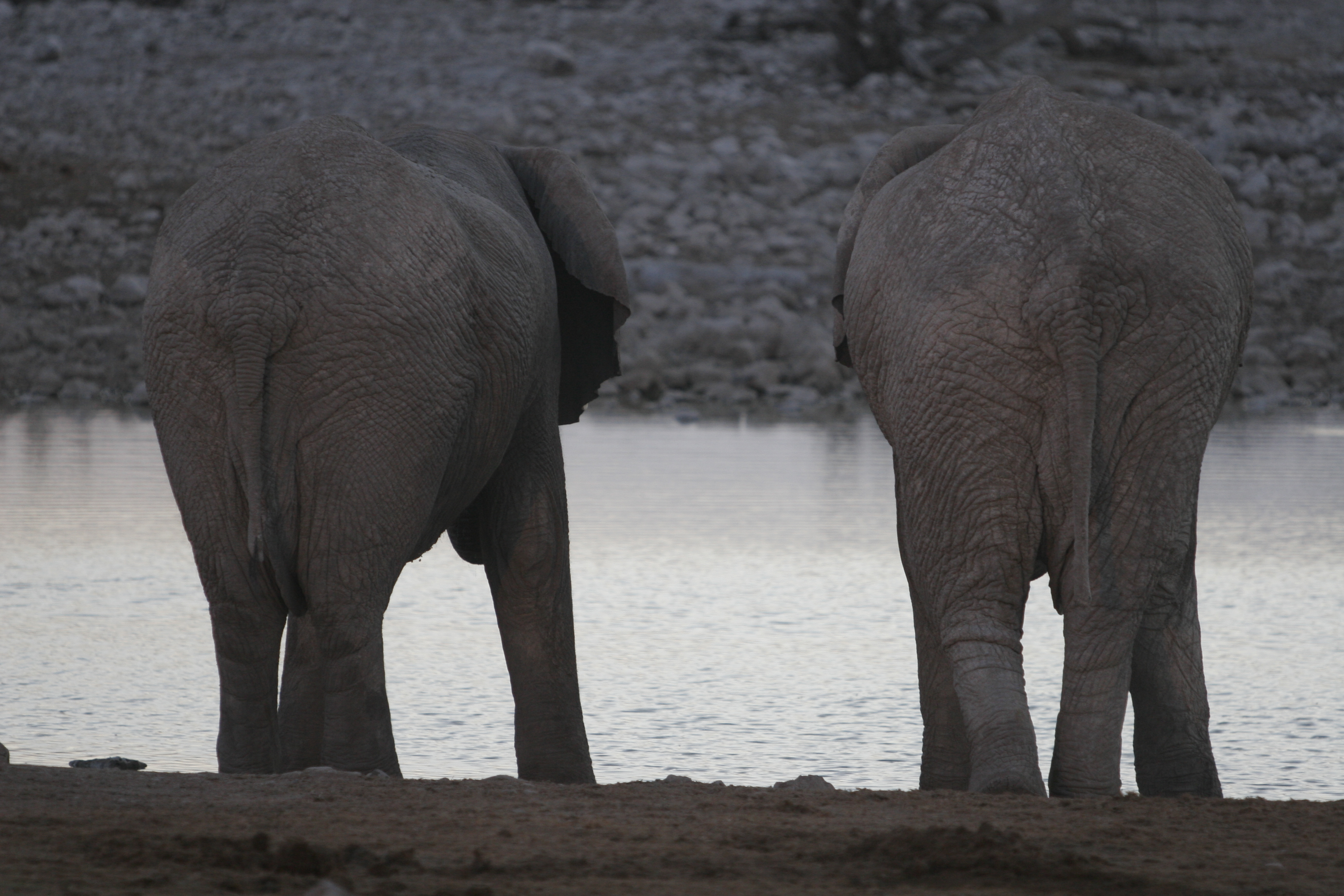
Adventurouspirits
